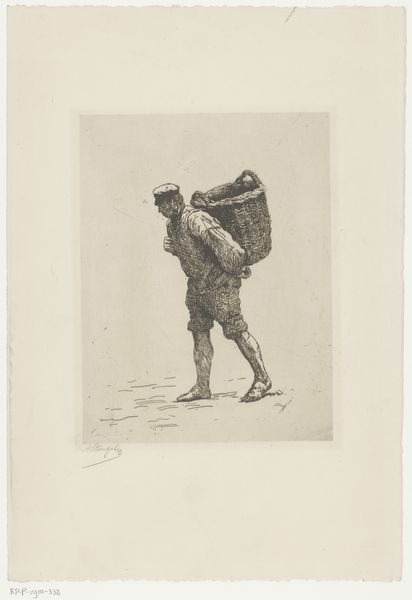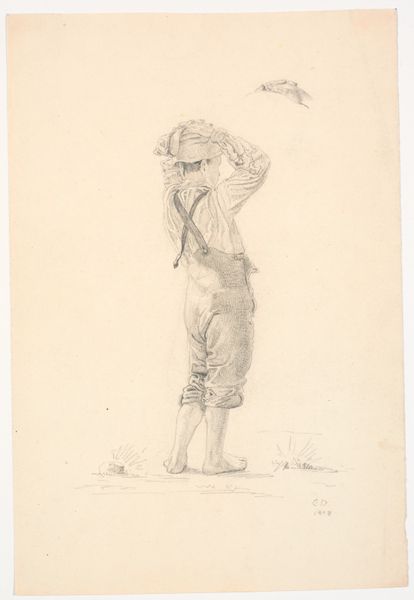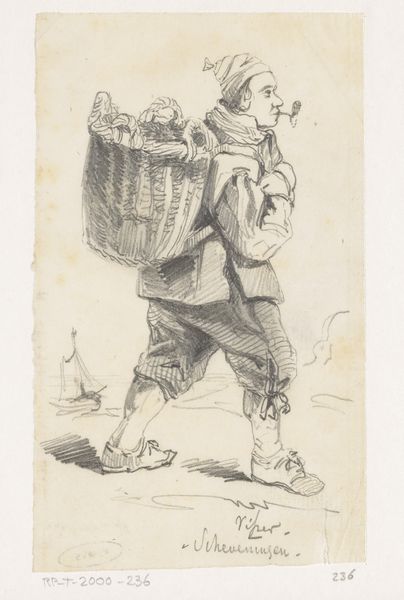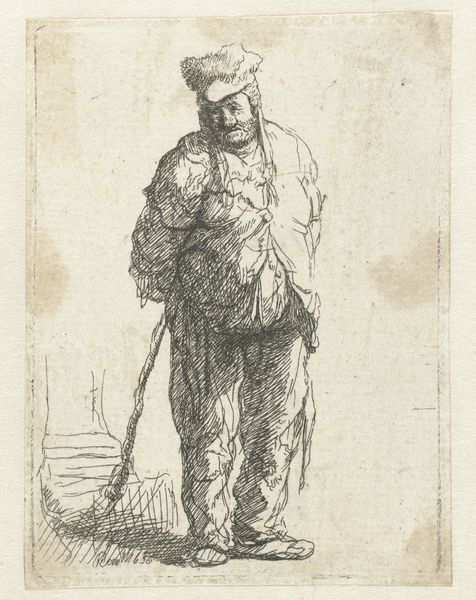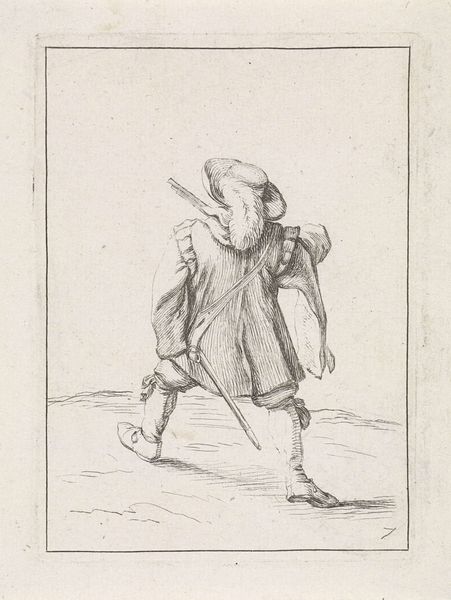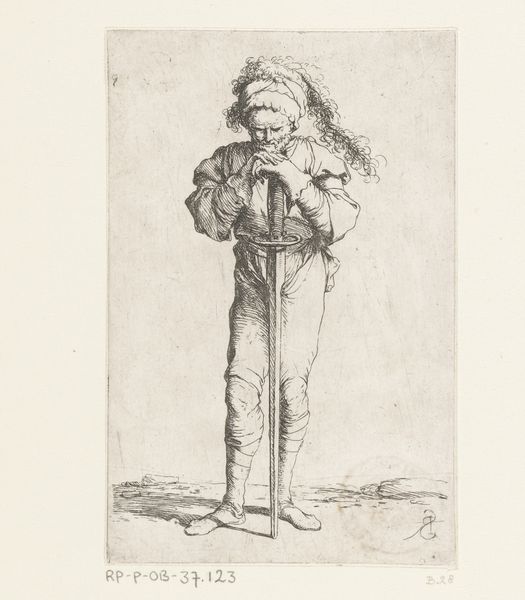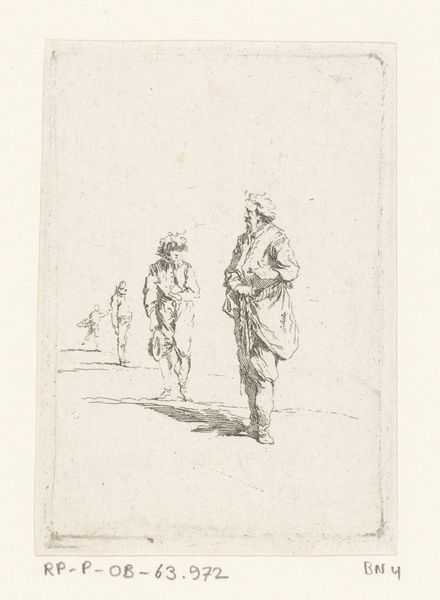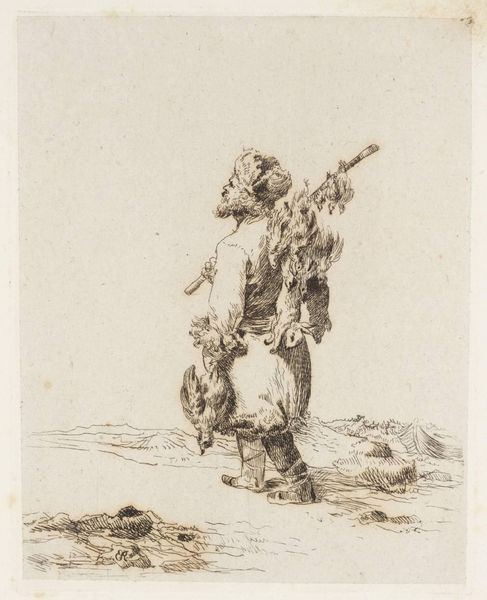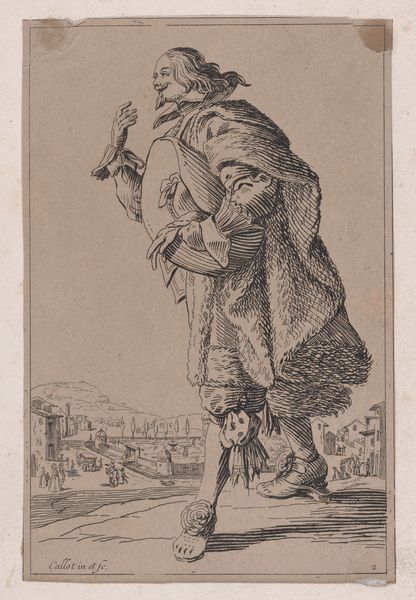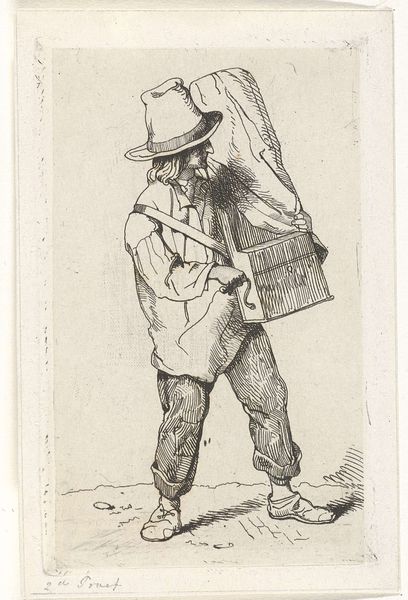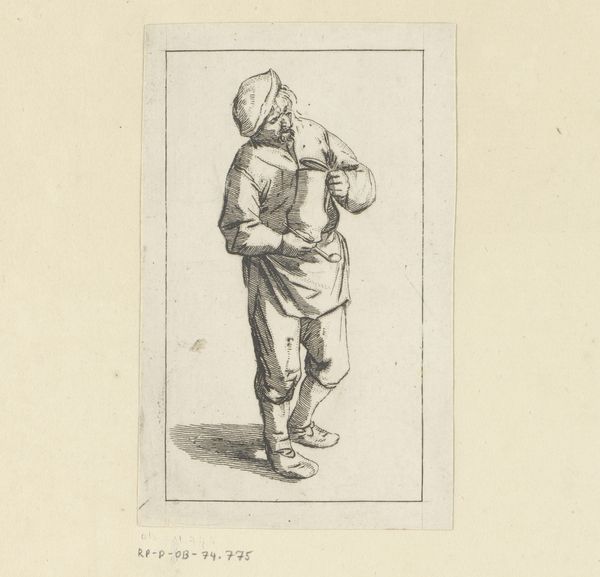
drawing, print, pencil
#
drawing
#
light pencil work
#
quirky sketch
# print
#
pencil sketch
#
old engraving style
#
landscape
#
personal sketchbook
#
ink drawing experimentation
#
pen-ink sketch
#
pencil
#
line
#
sketchbook drawing
#
pencil work
#
genre-painting
#
sketchbook art
#
realism
Dimensions: height 172 mm, width 135 mm
Copyright: Rijks Museum: Open Domain
Editor: This is "Fisherman Walking on the Beach," a drawing by Jacobus Adrianus Weiland from 1815. It’s a simple sketch, but something about the weight of the load the figure carries feels very heavy. How do you interpret this work? Curator: Well, consider the period: 1815, just after the Napoleonic Wars. The Netherlands were being reshaped, and there was widespread economic hardship. This isn't just a drawing of a fisherman; it's a representation of labor, resilience, and the everyday struggles of working-class people. What do you notice about his posture? Editor: He's definitely burdened, maybe even defeated? The way the bag seems to pull him down. Curator: Exactly! And the artist chooses to depict this not as some heroic figure, but an ordinary man, weighed down by circumstances beyond his control. Think about the social and political systems that placed him in this position. What does this image say about early 19th-century Dutch society? Is it celebrating it or critiquing it? Editor: I suppose it is highlighting the difficult life for people at that time, but through a simple image rather than direct commentary. Curator: Precisely. The lack of idealization, the focus on the everyday – it makes you wonder about Weiland’s own politics, doesn’t it? Editor: It does. I had initially seen the artwork as a simple genre scene, but now, thinking about its historical and social context, it takes on so much more meaning. Curator: Art is never created in a vacuum; by thinking of the moment when the work was produced we can appreciate that in representing this ordinary figure, Weiland gives voice to the unseen. Editor: That’s a really powerful point, thank you.
Comments
No comments
Be the first to comment and join the conversation on the ultimate creative platform.
